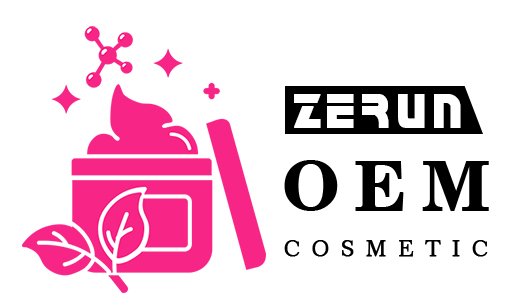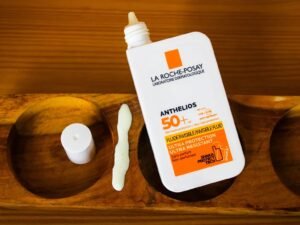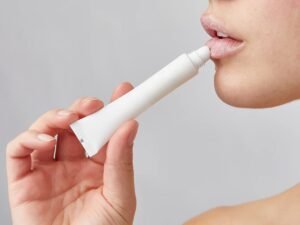Caring for your lips can be confusing when so many products claim to fix dryness. Some promise a quick barrier, while others deliver long-lasting relief. Lip balm is the familiar go-to for everyday hydration, whereas a lip mask aims to penetrate deeper and address persistent roughness. Deciding between the two often depends on your unique lip concerns, how much time you want to devote to daily care, and the textures you prefer. By understanding the fundamental differences, you can customize a routine that genuinely leaves your lips feeling smooth and refreshed.
Lip balm forms a light seal to lock in moisture, offering a handy remedy for mild dryness and frequent reapplication. Lip masks, by contrast, deliver an intense dose of nourishment, often applied for longer periods or overnight to deeply restore chapped areas. Think of a balm as an easy, on-the-go companion and a mask as a focused treatment session.
Many people wonder which product truly delivers better results. Others ask if both can fit into the same regimen. The truth is that each plays a distinct role. Lip balm usually caters to day-to-day comfort, while a lip mask steps in for more robust regeneration. Below, you’ll find a comprehensive guide covering how each option works, how they differ, and tips for finding the right formula.
What Is a Lip Balm and Why Do You Need It?

Basic Definition of Lip Balm
A lip balm is a specialized product formulated to alleviate and prevent dryness on the delicate skin of the lips. Because this area lacks the ample oil glands found in other parts of the body, it’s more vulnerable to moisture loss and environmental stressors.
Common Ingredients and Their Functions
- Waxes (e.g., Beeswax): Create a shield on the skin, slowing moisture evaporation.
- Natural Butters (e.g., Shea, Cocoa): Soften the lips and contribute to a smoother texture.
- Oils (e.g., Coconut, Jojoba): Add extra nourishment, helping to replenish natural lip oils.
- Soothing Agents (e.g., Aloe Vera, Chamomile Extract): Calm the skin, reducing any tight or uncomfortable sensation.
How Lip Balms Work to Protect Your Lips
Lip balms act like a gentle seal, preventing external factors—such as wind, cold, or indoor heating—from further stripping away moisture. By providing a thin barrier, they help your lips maintain hydration longer, which decreases the likelihood of cracks or flakes.
The Importance of Regular Application
Frequent use can make a noticeable difference. Most people apply lip balm in the morning before starting their day, after meals when wiping the lips might remove any protective layer, or whenever dryness becomes apparent. Consistency ensures the skin stays supple rather than cycling through repeated dryness.
Additional Benefits Beyond Hydration
Some lip balms go beyond simple moisture. Certain formulas incorporate sun protection (SPF) to defend against UV exposure. Others may contain mild exfoliants or vitamins to help refine the skin’s surface. These extra features can be especially helpful if you often experience cracked lips or spend a lot of time outdoors.
Why It’s Essential in Your Daily Routine
Because the lips are prone to dryness and can’t produce their own protective oils, they require targeted care. Neglecting them often results in peeling, soreness, or even splits. By including a lip balm in your everyday schedule, you create an easy, proactive way to keep your smile looking and feeling healthy.
What Is a Lip Mask and How Does It Work?

Definition of a Lip Mask
A lip mask is a concentrated treatment formulated to provide intense moisturization and repair. Unlike a traditional balm, which you might reapply throughout the day, a lip mask is usually spread on in a thicker layer and left for a set period—often overnight—to work its magic. This extended contact allows the nourishing elements in the product to penetrate more effectively, helping combat deep cracks or persistent dryness.
Key Ingredients and Their Roles
- Butters (e.g., Shea, Mango): These tend to be richer than those found in everyday balms, ensuring the product can replenish moisture at a deeper level.
- Oils (e.g., Avocado, Almond): Selected for their nourishing properties, these oils are often included in higher concentrations to soothe and soften severely parched lips.
- Humectants (e.g., Hyaluronic Acid, Glycerin): Pull water into the skin’s surface, making the lips appear more supple.
- Repair Agents (e.g., Ceramides, Peptides): Help reinforce the lip’s natural barrier, aiding in the process of regeneration and reducing the likelihood of further cracking.
The Process of Deep Hydration
Because you’re allowing the mask to remain on the lips for a longer duration—often while sleeping—its ingredients have time to fully absorb. By enveloping the lips with a dense layer of emollients and humectants, these formulas effectively lock in moisture, alleviating dryness that may have built up over time. The result is often a smoother, plumper appearance when you wake up or finish the treatment session.
Application Methods
- Nighttime Ritual: Many people prefer to apply a generous coat before bed, letting the product stay undisturbed for hours.
- Short Session: Some masks work in 10–15 minutes. You apply, leave them on while you relax or do other tasks, then wipe off any excess.
- Layering Over a Balm: In some cases, a thin layer of balm can be placed beneath a mask for extra hydration, though this depends on the product’s specific instructions.
Recommended Frequency
Usage largely depends on individual needs. If your lips are extremely dry, you might use a mask several nights in a row. Once your lips regain softness, a once- or twice-weekly application may be enough for upkeep. Keeping track of how your lips respond helps you pinpoint an optimal schedule without overdoing it.
Potential Variations and Additional Benefits
Lip masks can be found in various textures—from creamy balms to gel-like formulas—and may include added bonuses like gentle exfoliating agents or vitamins to address multiple concerns simultaneously. Certain products promise soothing effects for irritated skin, while others highlight anti-aging compounds to minimize fine lines around the lips. By selecting a version that matches your lip conditions and personal preferences, you can achieve a more tailored, spa-like experience at home.
Lip Balm vs Lip Mask: Which One Should You Use and When?
Understanding Their Unique Roles
Lip balm is usually a lightweight protectant meant for frequent application throughout the day. It forms a gentle barrier that helps keep moisture in and wind or cold air out. A lip mask, on the other hand, is a denser treatment designed to deliver deeper hydration, often left on for an extended period or overnight. While both aim to combat dryness, each performs differently depending on how much time and care your lips need.
Factors That Influence Your Choice
- Lifestyle: If you rarely stay still and want something quick, a balm might be simpler. If you enjoy self-care routines and can devote a little more time, a mask’s intensive approach could be more beneficial.
- Environment: Extremely dry or cold settings may demand both daily balm use and occasional lip mask sessions.
- Lip Condition: Mildly dry lips tend to respond well to balms, whereas persistent cracking often calls for a stronger intervention such as a mask.
Situations That Favor Lip Balm
- Frequent Touch-Ups: When you need a quick fix during the day—like after eating or before heading outside—lip balm is usually best.
- Mild or Occasional Dryness: If your lips only feel tight in certain conditions, periodic balm use may be sufficient.
- Light Texture Preference: Individuals who dislike heavier layers may find a balm’s smooth, easy application more appealing.
Signs You Need a Lip Mask
- Stubborn Cracking or Flaking: A more concentrated mask can often reach deeper layers that a standard balm might not fully address.
- Overnight Restoration: Leaving a mask on while you sleep gives ingredients ample time to infuse the skin, resulting in smoother lips by morning.
- Enhanced Nourishment: Masks frequently include higher concentrations of butters, oils, or humectants for a significant hydration boost.
Combining Both Approaches
Some people integrate both into their routine: balm for everyday convenience and a mask once or twice a week for comprehensive rejuvenation. This two-pronged method ensures that lips remain constantly protected while still receiving periodic deeper care. If dryness worsens, simply increase mask usage or try layering a rich mask on top of a thin coat of balm at night.
Quick Data and Reference Table
| Dryness Level | Recommended Product | Suggested Frequency | Example Scenario |
|---|---|---|---|
| Mild (Slight Tightness) | Lip Balm | Apply multiple times a day | Normal indoor heating in winter |
| Moderate (Noticeable Flaking) | Lip Balm + Occasional Mask | Balm daily, Mask 1–2x/week | Working in a dry or windy location |
| Severe (Chapped, Cracking) | Lip Mask + Balm Combo | Mask 2–3x/week + Balm daily | Very cold climate or chronic dryness |
In one informal survey, 65% of participants said they used only lip balm in their daily routine, while 35% combined a mask for added hydration at least once per week. Adjust these strategies to fit your own comfort level and any specific lip care goals you have in mind.
How Do Lip Balms and Lip Masks Differ in Application and Texture?
Balms are lightweight, typically applied in seconds, and reapplied as needed. Masks feature a denser consistency, often forming a thicker coat and staying on the lips for extended sessions, particularly during sleep.
Texture Variation
A balm might come as a twist-up stick or a soft balm in a jar, smooth enough to glide across your lips easily. Masks often have a plush, creamy, or gel-like feel that envelopes the skin in a richer coat. This difference matters because some prefer a subtle, barely-there layer, while others don’t mind a more substantial film that remains for hours.
Usage Differences
Balms are generally used throughout the day, either after meals, before going outside in chilly conditions, or whenever lips feel taut. Masks are commonly placed on clean, possibly even exfoliated lips, and left to sit, letting their components soak in. Many people apply a mask once or twice weekly, though it can be done more often if the formula is gentle and dryness is persistent.
Suitable Time Frames
A balm is quick and fits into nearly any moment—right before you step outside or while sitting at your desk. A mask typically fits into a dedicated period of self-care, such as a relaxing evening. Because some masks may be sticky or thick, it’s less common to use them on the go.
Quick Comparison Table
| Aspect | Lip Balm | Lip Mask |
|---|---|---|
| Consistency | Generally light or waxy | Heavier, creamy, or dense |
| Application Speed | Very fast, minimal prep | Slower, more deliberate |
| Wear Duration | Short-term coverage | Potentially all night |
| Main Purpose | Ongoing daily relief | Focused, intensive hydration |
| Best for | Mild dryness, frequent use | Deep nourishment, stubborn dryness |
Are There Any Specific Ingredients or Formulas You Should Look For?
Look for moisturizing elements like plant oils or butters, along with mild protective substances. Avoid harsh additives such as strong flavors or potent essential oils if your lips are easily irritated.
Moisturizing Agents
Products that incorporate nourishing oils or butters can enhance suppleness. Examples might include shea butter, coconut oil, and other natural fats. These substances fortify the top layer of the lips, helping them stay flexible instead of brittle.
Possible Irritants
Certain formulas include artificial flavorings, fragrances, or tingling components. While these may not be harmful for everyone, they can trigger discomfort if your skin is sensitive. Double-check ingredient lists to be sure you’re not applying anything that aggravates dryness rather than alleviating it.
Specialized Additions
Some balms or masks contain targeted extras that can lock in even more hydration or promote a smoother texture. The presence of humectants, for instance, can attract moisture to the skin, while certain peptides may help maintain a healthier look. These features aren’t always essential but can appeal to those seeking a more multi-faceted solution.
Summarizing Ingredient Chart
| Ingredient Type | Common Function | Considerations |
|---|---|---|
| Plant Butters (e.g., shea) | Deep moisturization | Heavier feel, can be protective |
| Oils (e.g., jojoba) | Softening, soothing | May be greasy in high quantities |
| Waxes | Forming a moisture barrier | Usually found in stick-type balms |
| Humectants (e.g., glycerin) | Drawing water into the lips | Can be especially helpful overnight |
| Mild Flavors/Scents | Adding a pleasant sensation | Possible irritation for some |
Do Lip Masks and Lip Balms Have Any Potential Side Effects?

Issues like irritation, over-exfoliation, or mild dependency can arise. Staying mindful of ingredient reactions and practicing moderation typically reduces the likelihood of problems.
Reactions
Individual responses vary. Some people experience redness or slight tingling if an ingredient doesn’t agree with them. Patch testing on a small patch of skin—like the inside of the wrist—can help gauge how a new product might behave.
Overuse
Exfoliating elements in certain masks, when used too frequently, can undermine the skin barrier instead of helping it. Similarly, applying a very rich formula too often might lead to a slick, uncomfortable feel. Moderation and paying attention to feedback from your lips are sensible steps.
Exfoliation Concerns
A few lip masks incorporate physical or chemical exfoliators to remove flaky patches. While this can leave lips feeling smoother, excess exfoliation risks causing sensitivity. Following usage guidelines on the packaging is a good practice.
Caution for Delicate Skin
If your lips have an especially fragile texture, approaching new treatments cautiously is wise. Even gentle formulas can sting if there’s significant cracking. Balancing hydration with mild exfoliation—only when truly needed—tends to be the safest path.
Conclusion
Lip balm and lip mask aren’t just two products competing for space on your shelf—they represent different layers of self-care and attention to your well-being. A simple balm can be the gentle daily companion, a quick fix that travels with you through life’s ups and downs. A mask, meanwhile, offers a deeper, more introspective pause—an indulgent step that allows your lips to recover and thrive overnight.
Though each has its own time and place, both speak to a greater idea: caring for ourselves in ways that anticipate change and respect our individual rhythms. Just as our lives shift between periods of busyness and rest, our lips can benefit from flexible choices—sometimes a quick swipe of balm, sometimes an immersive mask, and sometimes both. By tuning into what your lips truly need, you’ll create a balanced routine that supports not only your appearance but also your comfort and confidence.
When it comes to perfecting formulas or crafting custom products that match your unique vision, Zerun cosmetic factory remains ready to guide you through each step. Building a thoughtful lip care line—or simply refining your personal routine—becomes a rewarding journey of discovery, one that acknowledges the delicate dance between daily maintenance and the deeper renewal we all occasionally require.





